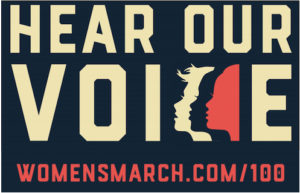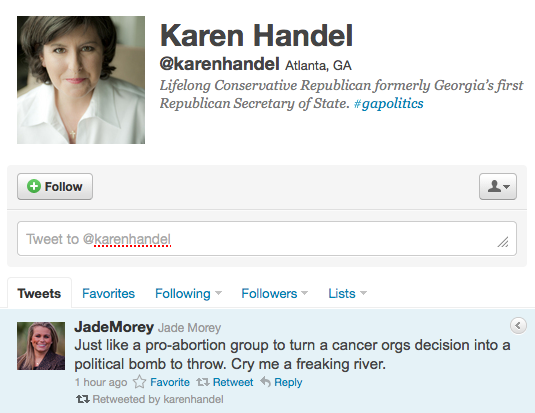 The women’s marches on Saturday, January 21, 2017, may have been the largest single day of marches in US history. Somewhere between 3.3 million and 4.6 million marched in cities across the USA, according to political scientists from the Universities of Connecticut and Denver, who are compiling a mammoth spreadsheet listing turnouts, from the roughly half a million that demonstrated in Washington to the single protester who picketed Show Low, Arizona. There were also marches around the world.
The women’s marches on Saturday, January 21, 2017, may have been the largest single day of marches in US history. Somewhere between 3.3 million and 4.6 million marched in cities across the USA, according to political scientists from the Universities of Connecticut and Denver, who are compiling a mammoth spreadsheet listing turnouts, from the roughly half a million that demonstrated in Washington to the single protester who picketed Show Low, Arizona. There were also marches around the world.
Facebook was an essential tool in organizing women’s marches all over the USA. Most everyone I know personally who was a part of a march got their information from a Facebook group set up specifically for their city’s demonstration.
I joined two of the online groups, for Portland, Oregon and for Washington, DC, and it was fascinating to watch how the groups were used. Some things I learned observing the online organizing:
- March organizers realized that they needed a web site or public google doc associated with the group, because group discussions quickly became unwieldy – there needed to a place to find all of the essential information, without having to scroll through what seemed an endless stream of Facebook group messages. It also mean that people that were not on Facebook could access the basic information.
- Constant facilitation and moderation were essential. FAQs are great and absolutely necessary, but there will always be people that don’t read them and ask the same questions over and over. Also, a quick, even immediate, response to rumors and misinformation was essential, and it took more than just one post to counter such.
- Rumors and misinformation were posted *regularly*. There were people posting that march permits were denied, that the marches were canceled, that the starting point had changed, that bus parking was being denied, that mass transit was going to be canceled that day, and on and on. Not sure if it was people just thinking/wondering out loud (many posts began with “I heard from someone that…”), if it was individuals trying deliberately to disrupt, or if it was people part of an organized effort to disrupt.
- Constant updates, often several times a day, were essential, particularly in showing response to criticism and questions.
- Facebook created a written record of the behavior of organizers. If they made a misstep, it was there for all to see. If they did things right, it was there for all to see. It was forced transparency for organizers.
- Deletion of critical comments was often NOT a good strategy. In November, Portland, Oregon March group moderators began deleting comments, even entire threads of conversation, that they deemed as critical of the march, such as those by people that felt the march was too focused on the experiences of white women, and did not address the unique challenges and perspectives of other women. Many people didn’t just want inclusiveness; they wanted specific statements regarding the particular challenges of black women, Latino women, Asian women, and transgendered people. Deleting those criticisms made people angrier. At one point, major allies such as Planned Parenthood and the NAACP Portland chapter decided they wouldn’t participate. Constance Van Flandern, an artist and activist in Eugene who was the Oregon’s official liaison to the national Women’s March on Washington, said in this article, “These women were overwhelmed by people coming to their Facebook page and asking about issues of diversity. It was just delete, delete, delete.” So Van Flandern started a new Facebook group for the march and invited nine women who had been complaining to her about the lack of inclusion on the other page to join. The page quickly replaced what had been the official page, and the march was saved – in fact, at 100,000, it was the largest march in Portland’s history.
- These marches weren’t at the initiative of paid staff at large organizations; they were started at the grassroots level, and powered by independent, spontaneous volunteers, who took on high responsibility roles and recruited and managed other volunteers, mostly through Facebook. And by all accounts, they managed brilliantly – not perfectly, but show me an event managed perfectly by paid staff! I also think their organization and popularity caught a lot of traditional women-focused organizations off guard, and they had to play catch-up. Often, grassroots folks are far ahead of traditional groups in taking a stand – and I think this is going to happen more because Facebook makes it so easy for any group to start getting its message out.
- Facebook played a significant role in getting the word out about these marches. But the reason these marches were so well attended, far exceeding predictions in terms of crowd size all over the USA, including DC and Portland, wasn’t just because people knew about the marches. I hope people don’t start thinking all they need is a Facebook group to get lots of people to attend a march.
What lessons did you learn in watching Facebook be used as the primary organizing tool for the women’s marches? Share in the comments below.
January 30, 2017 update: New York Times article, The Alt-Majority: How Social Networks Empowered Mass Protests Against Trump.
 The Last Virtual Volunteering Guidebook, by Susan J. Ellis and myself, is our attempt to document the best practices over the more than three decades virtual volunteering has been happening, in a comprehensive, detailed way, so that the collective knowledge can be used with the latest digital engagement initiatives to help people volunteer, advocate for causes they care about, connect with communities and make a difference. It’s a tool primarily for organizations, but there’s also information for online volunteers themselves. It’s available both in traditional print form and in digital version. Bonus points if you can find the sci fi/fan girl references in the book…
The Last Virtual Volunteering Guidebook, by Susan J. Ellis and myself, is our attempt to document the best practices over the more than three decades virtual volunteering has been happening, in a comprehensive, detailed way, so that the collective knowledge can be used with the latest digital engagement initiatives to help people volunteer, advocate for causes they care about, connect with communities and make a difference. It’s a tool primarily for organizations, but there’s also information for online volunteers themselves. It’s available both in traditional print form and in digital version. Bonus points if you can find the sci fi/fan girl references in the book…
Also see:
- The dark side of the Internet for mission-based organizations
- Addressing criticism, misinformation & hate speech online
- Haters gonna hate
- Have I offended?
- Handheld computer technologies in community service/volunteering/advocacy, an article from October 2001 that predicted the more widespread use of social media for use in protests.



